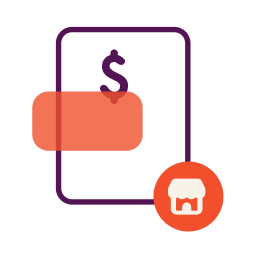To run a successful business, you have to be able to crank.
You have to be able to dig in, put your head down and focus like a laser on completing a specific task. No one and nothing can distract you. All of your energy, all of your efforts, are directed at a single objective.
Entrepreneurs with legitimate cranking skills are likelier to achieve their ambitions than entrepreneurs without them. The demands of business are varied, quick-moving and constant — if you don’t have a strategy for plowing through them, you’ll get plowed over.
There are three basic steps to killer cranking:
- Decide what kind of cranking you want to do.
- Find the ideal environment, supplement it with the right tools and remove all distractions.
- Decide your limit.
Let’s take a closer look at each of them.
1. Decide What Kind of Cranking You Want to Do
There are two basic kinds of cranking: automatic and creative. It’s important to separate them, because they require different environments and tools.
I define automatic cranking as stuff I can do without thinking. I sit at my computer with everything open — Slack, email, messages, etc. — and I can bounce between all of them without ever losing focus.
If I’m writing an email and see something pop up on Slack, bam, I take care of it and return to my email. No sweat.
Creative cranking, which is much more taxing, I define as anything that requires thought. Let’s say that I need to get through 100 emails. I know in advance that half of them are just delegation — I’ll forward them to someone else and ask them to handle it.
For about 23%, it’s going to be something I can respond to without thinking — my instincts will know what to say. And for 25%, I’m simply going to delete.
Two percent of the time, responding to an email will take a creative — i.e. thoughtful — effort. These I flag and save for later.
You can’t erratically flip back and forth between mindful and mindless work without undermining both. Do one or the other, and establish separate conditions for each.
2. Environment, Tools & Distractions
My requirements for automatic cranking are simple. I’m at my desk on the edge of my chair with my computer in front of me, my noise-canceling headphones on and my workout playlist blasting.
I’m on autopilot. I can get completely in the zone regardless of what goes on around me.
For creative cranking, all the structures come down. Distractions such as instant messaging are disabled. Whether I’m composing an important email, preparing a talk for a company meeting or writing an article, I have to get comfortable first.
To do that, I lie down in an anti-gravity chair and prop my laptop up on my knees. I still use my headphones, but the playlist is more relaxed than rocking. I’m alone with my thoughts.
Creativity is personal, so your ideal environment might differ from mine. The main thing is that you remove all unnecessary structure.
If you’re trying to crank on a creative project, why do you need your shoes on? Anything restrictive, get rid of, and your productivity will soar.
3. Deciding Your Limit
Cranking is tiring work, so set limits for yourself. Think of specific outcomes before you begin, versus a specific amount of time.
Instead of saying, “I’m going to tackle as much of this list as I can in five hours,” say, “Here are the things I’m going tackle.” It’s not time you’re committing to, it’s a task.
If I’m preparing a talk for my company meeting, for example, I’m going to crank until I complete that talk. My whole purpose is to get into a flow.
Nothing breaks up a flow faster than a wall, so I set no deadlines other than achieving my goal. And when I’m done, I’m done, even if it took me less time to complete than expected. I can spend those extra hours with my wife and daughters, and really spend it with them, because I’m not distracted by unfinished work.
It isn’t always possible to achieve the ideal conditions for cranking. You’re going to have to improvise and be flexible. I get some of my best creative work done on airplanes, where I take a window seat so that no one can bug me, put on my headphones and nerd out on a project until we land.
Sometimes it’s enough to just leave my desk and work in a different room. The number one takeaway is to change your environment when switching between modes.
Focused people are happy people. If that’s true of life in general, it’s doubly true of the workplace. Cultivate your powers of concentration by buckling down and teaching yourself to crank, and let the good times roll.
This article was originally written on April 19, 2017 and updated on February 1, 2021.



Have at it! We'd love to hear from you and encourage a lively discussion among our users. Please help us keep our site clean and protect yourself. Refrain from posting overtly promotional content, and avoid disclosing personal information such as bank account or phone numbers.
Reviews Disclosure: The responses below are not provided or commissioned by the credit card, financing and service companies that appear on this site. Responses have not been reviewed, approved or otherwise endorsed by the credit card, financing and service companies and it is not their responsibility to ensure all posts and/or questions are answered.